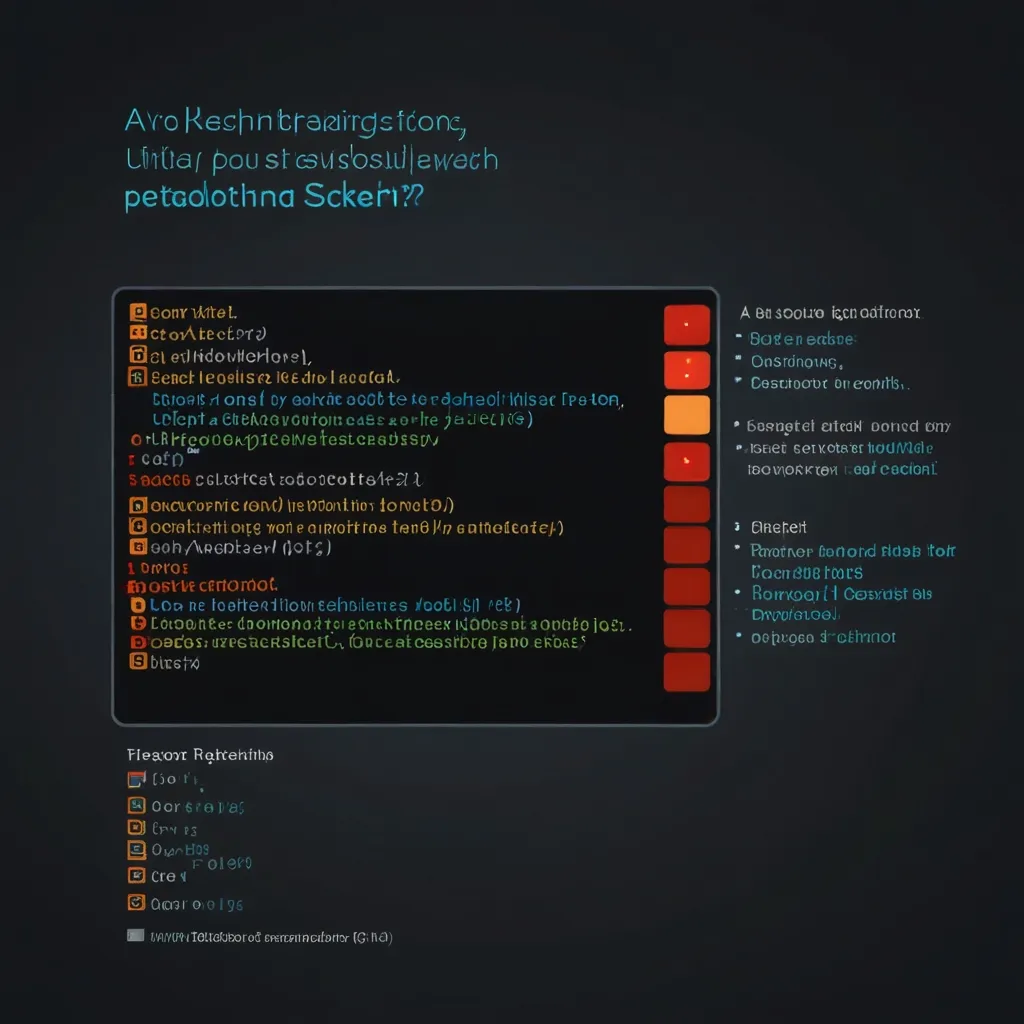Hey there, fellow developers! Today, we’re diving into the world of CQRS in NestJS. If you’ve been scratching your head trying to build maintainable applications, you’re in for a treat. CQRS, or Command Query Responsibility Segregation, is a game-changer when it comes to structuring your code.
Let’s start with the basics. CQRS is all about separating the read and write operations in your application. Think of it like having two separate channels: one for changing data (commands) and another for retrieving data (queries). This separation can make your code cleaner, more scalable, and easier to maintain.
Now, you might be wondering, “Why should I bother with CQRS in NestJS?” Well, NestJS is already a powerful framework, but when you combine it with CQRS, it’s like giving your application superpowers. You get better performance, improved scalability, and a clearer separation of concerns.
Let’s roll up our sleeves and get our hands dirty with some code. First, we’ll set up a basic NestJS project:
npm i -g @nestjs/cli
nest new cqrs-demo
cd cqrs-demo
npm install @nestjs/cqrs
Great! Now we have our project set up. Let’s create a simple user module to demonstrate CQRS in action. We’ll start with the command side of things.
First, let’s create a command:
export class CreateUserCommand {
constructor(public readonly name: string, public readonly email: string) {}
}
Next, we’ll create a command handler:
@CommandHandler(CreateUserCommand)
export class CreateUserHandler implements ICommandHandler<CreateUserCommand> {
constructor(private readonly userRepository: UserRepository) {}
async execute(command: CreateUserCommand): Promise<void> {
const { name, email } = command;
await this.userRepository.create({ name, email });
}
}
Now, let’s move on to the query side. We’ll create a query:
export class GetUserQuery {
constructor(public readonly userId: string) {}
}
And a query handler:
@QueryHandler(GetUserQuery)
export class GetUserHandler implements IQueryHandler<GetUserQuery> {
constructor(private readonly userRepository: UserRepository) {}
async execute(query: GetUserQuery): Promise<User> {
return this.userRepository.findById(query.userId);
}
}
Now, here’s where the magic happens. In your user module, you’ll tie everything together:
@Module({
imports: [CqrsModule],
controllers: [UserController],
providers: [
CreateUserHandler,
GetUserHandler,
UserRepository,
],
})
export class UserModule {}
In your controller, you can now use the CommandBus and QueryBus:
@Controller('users')
export class UserController {
constructor(
private readonly commandBus: CommandBus,
private readonly queryBus: QueryBus,
) {}
@Post()
async createUser(@Body() createUserDto: CreateUserDto) {
return this.commandBus.execute(
new CreateUserCommand(createUserDto.name, createUserDto.email),
);
}
@Get(':id')
async getUser(@Param('id') id: string) {
return this.queryBus.execute(new GetUserQuery(id));
}
}
Pretty neat, right? But wait, there’s more! CQRS really shines when you start dealing with complex domains. Let’s say you’re building an e-commerce platform. You might have a product catalog that’s read frequently but updated less often. With CQRS, you can optimize these operations separately.
For instance, you could have a denormalized read model for products that’s optimized for quick reads:
@QueryHandler(GetProductsQuery)
export class GetProductsHandler implements IQueryHandler<GetProductsQuery> {
constructor(private readonly productReadModel: ProductReadModel) {}
async execute(query: GetProductsQuery): Promise<Product[]> {
return this.productReadModel.getAll();
}
}
Meanwhile, your write model could handle all the complex business logic for updating products:
@CommandHandler(UpdateProductCommand)
export class UpdateProductHandler implements ICommandHandler<UpdateProductCommand> {
constructor(
private readonly productRepository: ProductRepository,
private readonly eventBus: EventBus,
) {}
async execute(command: UpdateProductCommand): Promise<void> {
const product = await this.productRepository.findById(command.productId);
product.update(command.updates);
await this.productRepository.save(product);
this.eventBus.publish(new ProductUpdatedEvent(product));
}
}
Now, I know what you’re thinking: “This seems like a lot of extra code!” And you’re not wrong. CQRS does add some complexity to your application. But trust me, when your app starts growing and you need to scale, you’ll thank yourself for using CQRS.
One of the coolest things about CQRS is how it plays nicely with event sourcing. Instead of storing the current state of your entities, you store a sequence of events that led to that state. This gives you an audit trail for free and makes it easy to rebuild the state of your application at any point in time.
Here’s a quick example of how you might implement event sourcing with CQRS in NestJS:
@CommandHandler(PlaceOrderCommand)
export class PlaceOrderHandler implements ICommandHandler<PlaceOrderCommand> {
constructor(
private readonly orderRepository: OrderRepository,
private readonly eventStore: EventStore,
) {}
async execute(command: PlaceOrderCommand): Promise<void> {
const order = new Order(command.orderId, command.userId);
const event = new OrderPlacedEvent(order);
await this.eventStore.saveEvent(event);
await this.orderRepository.save(order);
}
}
In this example, we’re saving an event to our event store before updating our read model. This ensures that we have a complete history of all changes to our system.
Now, I’ll be honest with you. Implementing CQRS isn’t always a walk in the park. It can be challenging, especially if you’re new to the concept. But don’t let that discourage you! Start small, maybe with a single feature in your application, and gradually expand from there.
One thing I’ve learned from my own experience is that CQRS really shines in microservices architectures. Each microservice can have its own set of commands and queries, making it easier to scale and maintain individual parts of your system.
Remember, CQRS isn’t a silver bullet. It’s a powerful tool, but like any tool, it needs to be used wisely. Don’t feel like you need to apply CQRS to every part of your application. Use it where it makes sense, where you have complex domain logic or need to scale read and write operations independently.
As you start implementing CQRS in your NestJS applications, you’ll likely run into some challenges. That’s normal! Don’t be afraid to experiment and adapt the pattern to fit your specific needs. And most importantly, have fun with it! CQRS opens up a whole new way of thinking about application architecture, and that can be really exciting.
So there you have it, folks! A deep dive into CQRS in NestJS. I hope this guide helps you on your journey to building more maintainable and scalable applications. Happy coding!






